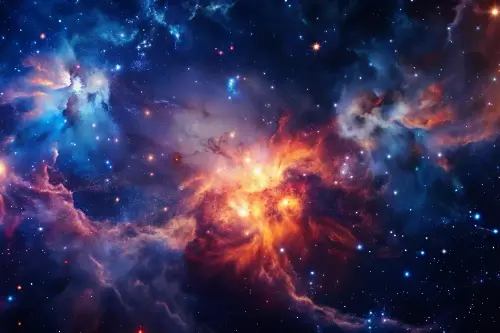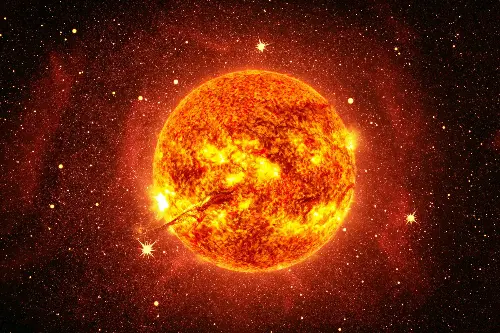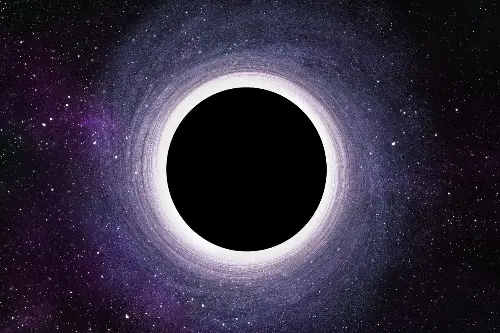The awe-inspiring universe we find ourselves in is home to an incredible variety of celestial phenomena, none more enchanting than the life cycle of a star. As timeworn as the cosmos itself, the story of a star's life from inception to its ultimate fade into obscurity is a tale of transformation, cataclysmic events, and the profound impact these celestial beacons have on the fabric of space and time. In this journey, we'll unravel the spellbinding lifecycle of a star and touch upon the celestial ballet that unfolds against the backdrop of the cosmos.

The Birth of a Star: Nebulae to Protostars
It all begins within cosmic nurseries known as nebulae, colossal clouds of dust and gas scattered throughout the galaxies. These clouds are primarily composed of hydrogen, supplemented with helium and other trace elements. As gravity pulls the gas and dust particles together, they begin to clump, giving rise to regions of increasingly high density. These pockets, where material accumulates, form the seeds of future stars and are known as Bok globules.
Over millions of years, the pressure and temperature within these regions soar, eventually triggering nuclear fusion — the ultimate engine driving a star's brilliance. As hydrogen atoms fuse to form helium, they unleash copious amounts of energy, heralding the birth of a new star.
The Main Sequence: The Star's Prime
Upon entering the main sequence phase, a star has reached a stable point in its life. It operates like a cosmic furnace, balancing gravity's inward pull with the outward pressure of thermal nuclear reactions occurring at its core. The sun, our closest star, is currently in this stage of its life. It has been shining for about 4.6 billion years and is expected to do so for another 5 billion years.
During the main sequence, stars come in a variety of sizes, colours, and temperatures. The heftiest of these are the blue giants, massive and hot with lives as short as a few million years. On the other end of the spectrum are the red dwarfs, smaller, cooler, and incredibly long-lived, with lifespans that can exceed 100 billion years.

Supergiants and the Lead-up to Cataclysm
Once a main sequence star has exhausted the hydrogen in its core, the endgame begins. For stars like the sun, they expand into red giants. Their cores contract and heat up, igniting fusion in the surrounding hydrogen shell, which makes the star's outer layers swell.
For the universe's true leviathans, those many times the mass of the sun, the outcome is even more dramatic. They morph into supergiants and begin to fuse heavier elements, like carbon, oxygen, and even silicon, until they reach iron, a nuclear dead-end where fusion consumes more energy than it releases. These stars are ticking time bombs, with the clock winding rapidly down to their inevitable demise.
The Final Acts: Supernovae and Stellar Remnants
The story takes a violent turn as supermassive stars, unable to sustain themselves, implode under their own weight, then rebound in spectacular supernova explosions. These cosmic outbursts are so brilliant they can briefly outshine entire galaxies and are the crucibles in which all the heavier elements are forged. Supernovae scatter these newly minted atoms across the cosmos, planting the seeds of future planets, and even life itself.
What remains after a supernova depends on the star's mass. Low to moderate mass stars, like our sun, gently puff away their outer layers to form planetary nebulae, leaving behind a dense core that cools over time — a white dwarf. These stellar embers slowly fade to black over billions of years, becoming a dark cinders of their former selves.
More massive stars leave behind neutron stars, incredibly dense remnants about the size of a city but with up to twice the mass of the sun. Some of these, when spinning, are detected as pulsars, emitting regular lighthouse-like beams of radiation.
The most gigantic stars take the final plunge into darkness, collapsing to form black holes, regions of space where gravity is so strong that not even light can escape their grasp. These enigmatic and powerful entities continue to both enthrall and puzzle scientists.

The Intergalactic Influence of Stellar Evolution
The lifecycle of stars is the engine of cosmic evolution, driving the chemical enrichment of the universe. Every carbon atom in our bodies, every gold and platinum piece on Earth, was once inside a star. The lifecycle of stars underpins the very possibility of life as we know it, and their death throes ensure our cosmos is a dynamic and ever-evolving place.
Each star's journey from the dense pockets of a nebula to the vastness of infinite darkness is a microcosm of the greater celestial mechanism at work. It's a powerful, transformative process that touches every corner of the universe. It's a reminder of our origins in the stardust and a testament to the intricate balance and immense scales that govern the cosmos.
The cycle of stellar evolution continues unabated, with new stars being born from the remnants of the old. As we gaze up at the night sky, we are not just looking at points of light but at stages in an ongoing saga. From the tranquil birth within placid nebulae to the violent supernova deaths that mark their ends, stars are the storytellers of the universe, each with a tale that fascinates and inspires wonder. Understanding their life cycle is more than just a journey through space; it's an exploration of the very forces that shape existence itself.
